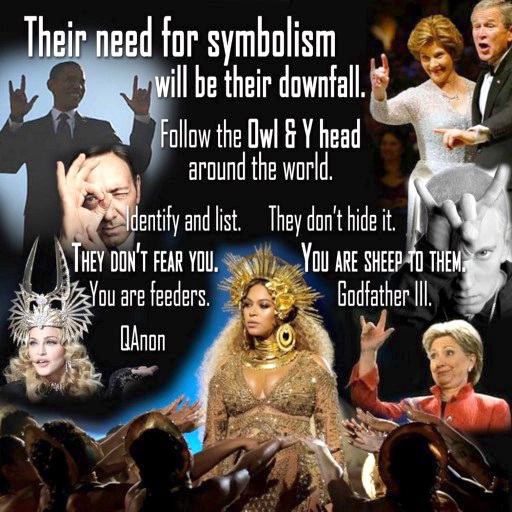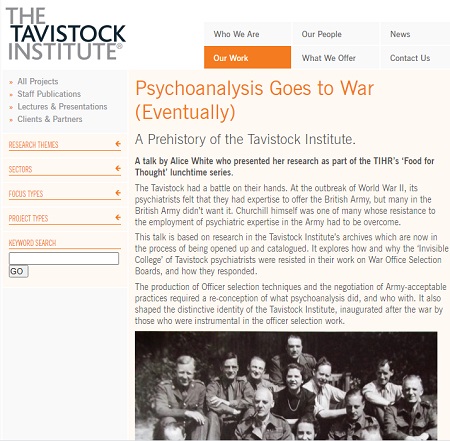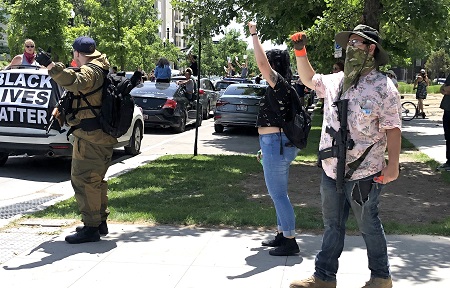When Alternate Reality Game (ARG) designer Reed Berkowitz first came across posts by QAnon (an anonymous right-wing identity claiming to be a government official with top Q-level security clearance), he recognised the hallmarks of his industry immediately: “It was gaming’s evil twin. A game that plays people.”

ARG-style games leave clues for the player in order to induce them down a particular pathway, said Berkowitz in an October 2020 article, “A Game Designer’s Analysis Of QAnon” posted on medium.com, but they rely upon using clues that are obscure enough that gamers feel the thrill of cracking the puzzle themselves. Game designers, Berkowitz pointed out, are wary of a phenomenon called apophenia when constructing such games. Apophenia is “the tendency to perceive a connection or meaningful pattern between unrelated or random things (such as objects or ideas)”. In games this can send players off-track; but with social media posts from QAnon, this is the whole point—to get people to jump to conclusions that don’t exist. Explains Berkowitz: “There are no scripted plots. There are no puzzles to solve created by game designers. There are no solutions. QAnon grows on the wild misinterpretation of random data, presented in a suggestive fashion in a milieu designed to help the users come to the intended misunderstanding. ...

“There is no reality here. No actual solution in the real world. Instead, this is a breadcrumb trail away from reality. Away from actual solutions and towards a dangerous psychological rush. It works very well because when you ‘figure it out yourself’ you own it. You experience the thrill of discovery, the excitement of the rabbit hole, the acceptance of a community that loves and respects you. Because you were convinced to ‘connect the dots yourself’ you can see the absolute logic of it. This is the conclusion you arrived at.”
Real whistleblowers, on the other hand, don’t dole out clues like breadcrumbs to get you to follow a certain path, writes Berkowitz. From Daniel Ellsberg of “Pentagon Papers” fame to Chelsea Manning or Edward Snowden, they just get it out there, usually all at once. But the makers of QAnon understand that it is far more powerful to make people think they have discovered something for themselves. Trying to convince them to change deeply held beliefs head-on is a recipe for failure. Instead QAnon encourages people to do their own “research” and not to trust anything anyone tells them. They are given the tools to arrive at “their own conclusions”. Their discoveries are reinforced by an entire community of followers coming to the same conclusions. QAnon becomes a “force-multiplier” as people are led down any number of rabbit holes provided by other purveyors of outlandish conspiracy theories. Social media platform algorithms ensure maximum amplification of popular posts. Q advises followers on how to become proslyetisers of the game, recruiting others. The more authorities try to shut it down, the more “credibility” it gets, and the more it grows.
Says Berkowitz: “This is not a loner on the internet that started dropping a few posts and suddenly went viral. I’ve met those people. I’ve been on those projects. It doesn’t happen like this. This is a media campaign. This is a coordinated propaganda campaign.” This is not organic.
Tavistock methods
This phenomenon, seen to varying degrees all over the internet, is fed by the deep distrust people have of elected leaders who, presiding over rapidly collapsing economies, have failed to address crisis after crisis, contributing to the slide into depression-like conditions and a dependency on police-state controls to keep social order.
In the post-WWII period, a major psychological shift was foisted upon the population by British and American defence and psychological warfare agencies, to prepare for future campaigns including wars and “Colour Revolutions”, to ensure Anglo-American hegemony. The City of London and Wall Street financial fraternity was hamstrung when US President Franklin Roosevelt forced British Prime Minister Churchill into a new anti-colonial post-war paradigm which included a new international financial framework, the 1944 Bretton Woods agreement. While plans were immediately set in motion to destroy Bretton Woods and replace it with a new global financial dictatorship, other mechanisms of control were unleashed to prevent the new economic paradigm taking off.

The Tavistock Clinic, a London-based psychiatric institute founded in the early 1920s, had become the psychiatric arm of the British Army during World War II, selecting and preparing commanders for the battlefield. After the war, Tavistock discovered that its experimentation with drugs and electroshock therapy was no match for the power of group dynamics in enforcing behaviour. Its reach was extended into the USA in 1947 when the Tavistock Institute of Human Relations was formed. Its aims concurred with those of the Research Centre for Group Dynamics at the Massachusetts Institute of Technology (later relocated to the University of Michigan) and the Society for General Systems Research, renamed the Cybernetics Society, joined later by the International Network of Social Network Analysis, founded in 1976, which assembled social engineers from various of these outfits to develop software for social network analysis—to monitor and track the new social programming capabilities of what would come to be known as the internet.1
The rise of digital technologies proved a boon in shifting people’s psychology. A major problem during WWII was that the vast majority of soldiers would not fire on another human being because they were trained by firing at bull’s-eye targets. Human-shaped silhouettes soon replaced bull’s-eyes, and by the time of the Vietnam War, the hit rate had increased five-fold. Far more effective in overcoming the natural psychological aversion to killing, however, was technology that developed with the increasing realism of simulators, later incorporated into point-and-shoot video games, where young children would be drilled—not several times a year like the military, but for hours every day—to shoot indiscriminately on sight. Violent video games were designed by military-corporate partnerships as “mass-murder simulators”, military and police training expert Lt.-Col. David Grossman2 declared after the Columbine High School shooting in 1999. The video game strategy intersected plans for futuristic warfare envisioned by the US Defence Department’s Advanced Research Projects Agency (DARPA).3
Social media held promise well beyond that of the indoctrination capabilities of radio and television media and the internet more generally, offering a unique space for experimentation with mass psychology. A peer environment was created to push certain ideas through consensus; group dynamics made individuals more likely to forfeit their sovereignty and become suggestible to predetermined objectives. Platforms required people to provide psychological profiles which could be utilised to usher people down one pathway or another in the mode of a “Choose your own adventure” book. It could be used to fashion social movements, setting the stage for gang and counter-gang conflicts. People are gently propelled to extremes on either side of the political spectrum, to blackand-white positions reminiscent of movies characterised by “goodies” and “baddies”. There is usually some truth on both sides, but deliberate lies can be injected into the mix by “third forces”. Whether driven by QAnon, Antifa or Extinction Rebellion, this polarisation is designed to whip up mobs that will fight among themselves, effectively keeping people who are waking up as far away as possible from serious political action that would actually deliver solutions.
Civil war?

A number of highly connected figures have betrayed the fact that the ultimate goal of the current social experiment is a new US civil war which would justify the extreme crackdown necessary to keep control through the coming global financial and economic breakdown. Australian counterinsurgency expert David Kilcullen, who devised plans to crack down on local insurgencies based on methods used in the War on Terror in Iraq and Afghanistan, in May 2020 warned of “the possibility of armed conflict towards the end of this year” inside the USA.4 Using Tavistock’s uniquely identifiable language, the Christchurch mass murderer, Brenton Tarrant, outlined in his manifesto the drive for a civil war that would “balkanise the USA along political, cultural and, most importantly, racial lines”.5 The doctrine of Accelerationism, of which Tarrant is an advocate, pushes violent causes whether left- or right-leaning, in order to agitate for change. This came to light when the accelerationist “Boogaloo Bois” in their signature Hawaiian shirts were prominent in the riots following the murder by police of African-American man George Floyd in May 2020. Accelerationism had been boosted in the mid-1990s by the Cybernetic Culture Research Unit (CCRU) at the UK’s University of Warwick, influential in Silicon Valley, which promoted “hyperstitions” (superstitious beliefs that make an impact even if they don’t come to pass) and “cyber swarming” to ensure the rapid spread of internet memes, such as those the Boogaloo and QAnon networks rely on. One of the preoccupations of Accelerationism, wrote Andy Beckett in a 2017 profile of the movement,6 is the increasingly “blurred boundary between the imaginary and the factual”, a factor voraciously tapped by creators of today’s video games and post-apocalyptic-themed series and movies. Truth is the only antidote to this scourge which is distracting from real political action and obscuring legitimate forms of protest.
By Elisa Barwick, Australian Alert Service, 20 January 2021
Footnotes
1. Read the details in “INSNA: ‘Handmaidens of British Colonialism’”, EIR, 7 Dec. 2007; see also “Tavistock’s new terrorism: more deadly than ISIS”, AAS, 29 May 2019.
2. Lt.-Col. David Grossman is the author of the 1999 book Stop Teaching Our Kids To Kill: A Call To Action Against TV, Movie & Video Game Violence, which he co-authored with Gloria DeGaetano, and On Killing: The Psychological Cost of Learning to Kill in War and Society. See interview with Grossman in “Media violence: giving children ‘the skill and the will to kill’”, EIR 17 March 2000.
3. “Video Games and the Wars of the Future”, EIR 10 Aug. 2007
4. “Anglo-American ‘counterinsurgency’ planners bring permanent wars back home”, AAS, 24 June 2020.
5. “The Christchurch massacre: British imperial ‘population control’”, AAS, 24 Apr. 2019.
6. Andy Beckett, “Accelerationism: how a fringe philosophy predicted the future we live in”, The Guardian, 11 May 2017. See also, "What is the ‘Third Force’ fuelling US unrest?", AAS 10 June 2020






